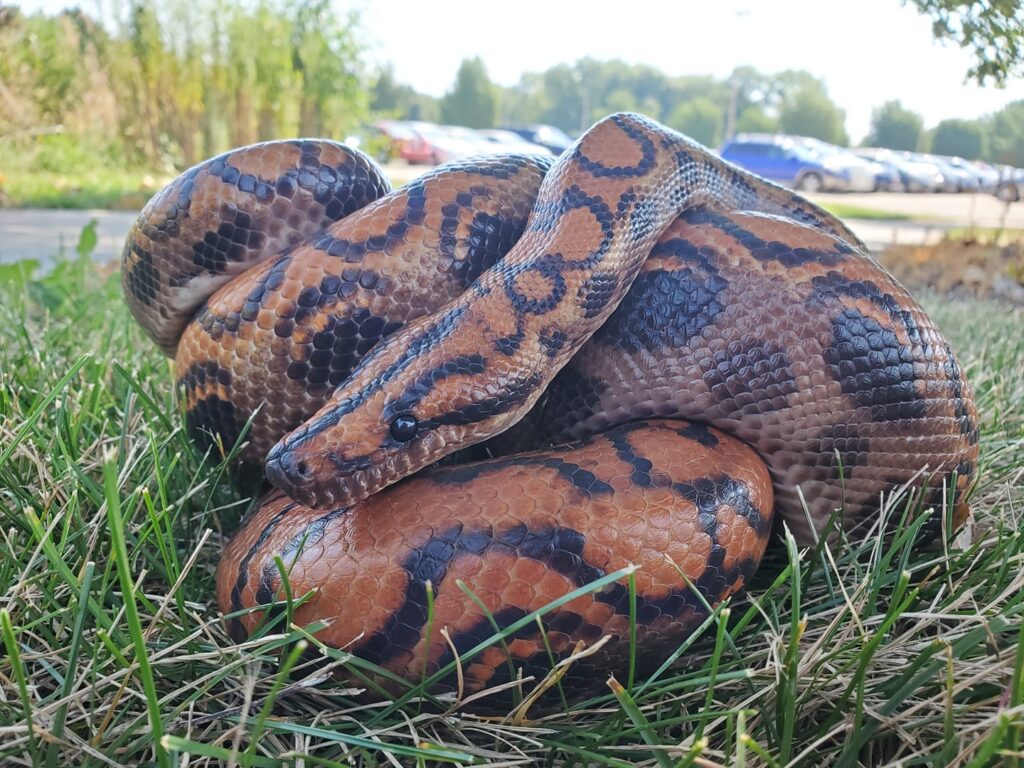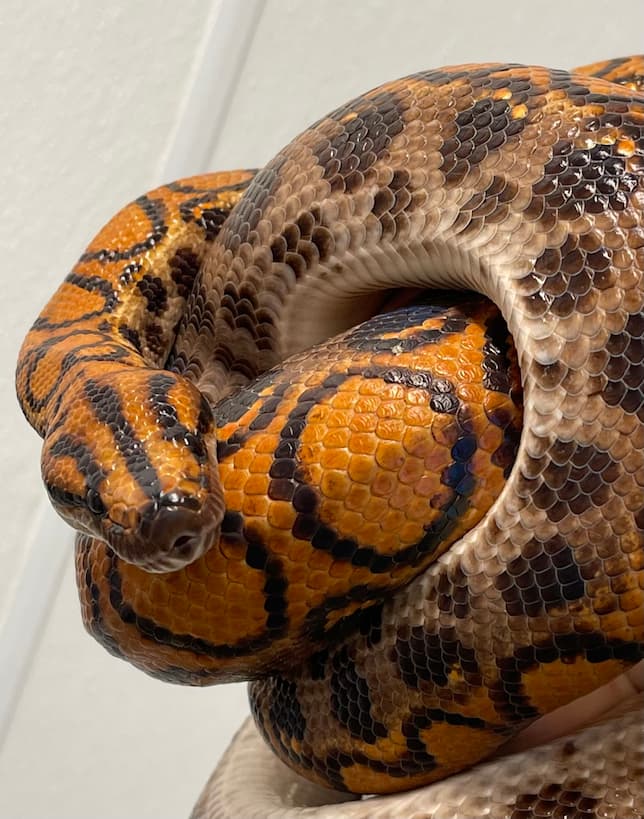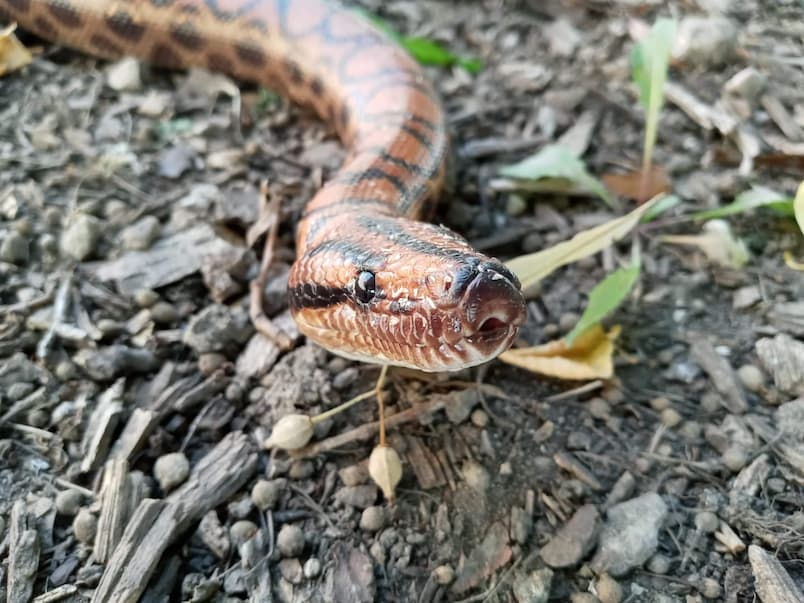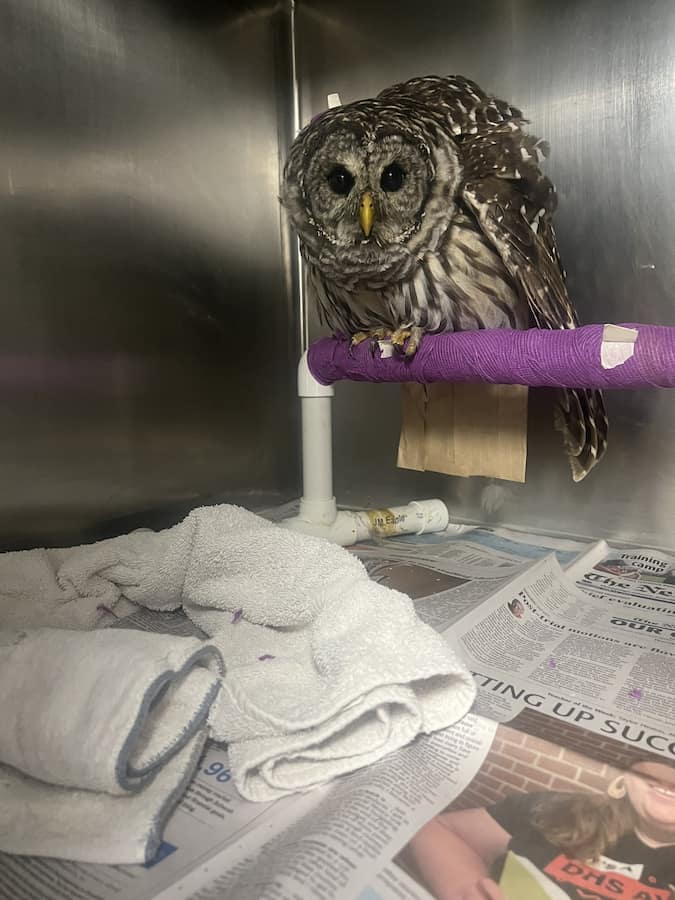The Wildlife Medical Clinic gives a warm welcome to our newest Wildlife Ambassador animal,
Caduceus the Brazilian rainbow boa!
Caduceus has prior experience as a professional program animal, having spent the last 11 years of her life in the excellent care of the College of Veterinary Medicine’s Non-Traditional Species Club. Because of her extremely mild temperament, she has become rather famous for being an excellent “beginner snake” for students who have never handled a snake before. Over the past few months, she has moved into the WMC Ambassador Building and the Ambassador Team has taken over her daily care. We are currently giving her time to adjust to her new location and lifestyle, but we hope to have Caduceus attending public events soon!

As a part of the WMC Ambassador Program, she will attend educational events with our other ambassadors. By improving education and removing fear surrounding snakes, Caduceus will help improve the relationship between humans and her Illinois counterparts. Through caring for her, student volunteers on the Ambassador Team will also have the opportunity to learn about snake husbandry and medical care.

Caduceus Fun Facts:
● Brazilian rainbow boas are native to the forest floors of South America, not Illinois. However, Caduceus was born in captivity and has spent her entire life as a pet and more recently program animal.
● Caduceus is named after the symbol for medicine, which depicts a snake encircling a staff. While some call her by her formal name, others prefer to call her Cadu, which is just a shortened version of her name.
● This species gets its name from its iridescent or rainbow-hued skin, which is caused by tiny ridges on the scale surface that refract light.
● Unlike most other snake species, boas and a few other species do not lay eggs. Instead, they incubate their eggs internally and then give birth to live young! The term for this is ovoviviparous and is slightly different than viviparous mammals. Other ovoviviparous snakes are garter snakes, vipers, anacondas, and most sea kraits.
● Boas are not venomous and subdue their prey through constriction. Caduceus eats mice that we purchase frozen from a company and then thaw to feed her. Her wild counterparts not only eat mice but various rodents, birds, lizards, and even fish.
● In captivity, boa species can live well into their twenties. Caduceus is currently sixteen years old.
● Contrary to popular belief, snakes are not slimy! Their scales are smooth to the touch.
● In most snake species, females are bigger than males. Brazilian rainbow boas can grow to be 4-6 feet in length. As an older female, Caduceus is over five feet long and weighs around five pounds.
● Snakes do not have ears! While lizards and turtles have eardrums, snakes lack the structure altogether. However, their jaws are adapted to function as a sort of “internal ear” to sense vibrations. Snakes are not deaf, but they don’t process sound the way mammals do.




